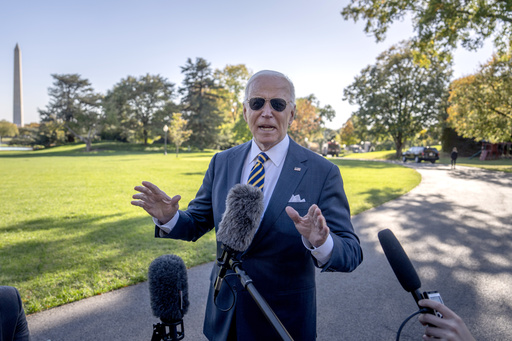The Biden administration is taking steps to introduce a new process for canceling student loans for individuals burdened by significant financial challenges, such as medical expenses and child care costs.
This proposal, announced recently, marks the third attempt by President Joe Biden to provide student loan forgiveness, amid ongoing legal hurdles posed by Republican states. Previously, the Supreme Court rejected his first initiative, and his second attempt is currently stalled due to a federal judge’s ruling in Missouri.
The newly suggested rule would need to navigate through several procedures before being officially implemented, and it remains uncertain if it can be finalized before Biden’s term concludes in the coming months. Similar to earlier student loan forgiveness measures, this plan could encounter judicial opposition from conservatives who argue that it violates constitutional principles and is inherently unjust.
If the rule is put into effect, it would empower the Education Department to actively cancel loans for those borrowers determined to have an 80% likelihood of defaulting within two years. Others would have the option to petition for a review to see if they qualify for debt cancellation.
The initiative aims to support individuals who are unlikely to repay their loans, with approximately 8 million Americans expected to meet the eligibility criteria according to estimates from the Education Department.
Education Secretary Miguel Cardona expressed concern about the current financial struggles facing borrowers, stating that the existing student loan system has made it excessively difficult for those struggling with severe hardships to obtain necessary assistance.
Eligible individuals may include those facing unexpected medical expenses, overwhelming child care charges, or financial distress following natural disasters, among various other challenges as identified by the Education Department.
The department could evaluate multiple criteria to ascertain an individual’s risk of entering default, including household income, age, receipt of public assistance, and total debt levels beyond student loans.
The evaluation could also consider any supplementary indicators of financial strain that the Secretary might identify. Generally, loans are classified as in default when there have been no payments for approximately nine months.
With over 1 million borrowers defaulting annually, Cardona emphasized that the new rule could help alleviate the burden on the agency when attempting to collect funds that are unlikely to be recovered. He mentioned the financial implications for taxpayers in pursuing defaulted loans that are often beyond recovery efforts.
This proposal will undergo a 30-day public commentary phase before it can become formalized, with the administration aiming for completion in 2025. However, its future appears uncertain as it approaches the critical period surrounding the upcoming presidential election on November 5.
Currently, the Democratic nominee for President, Kamala Harris, has not made any clear proposals regarding student loan cancellation should she be elected, while Republican nominee Donald Trump has labeled Biden’s cancellation efforts as unjust and unlawful.
Biden’s recent proposal stems from a federal rules process that engaged higher education experts, with advocates emphasizing the necessity of provisions to address borrower hardship, as many find themselves burdened with loans they cannot repay.
The Biden administration has asserted its authority under the Higher Education Act, enabling the education secretary to waive debts in certain circumstances. It pointed to practices in other federal agencies where they often forgive debts based on principles such as fairness and equity.
This legal justification aligns with Biden’s second loan forgiveness attempt, which aimed to deliver relief to borrowers facing significant interest payments and those with older debts. However, this plan is also being scrutinized in light of ongoing legal challenges.
Biden initially campaigned on a platform promising substantial student loan forgiveness, though most of his proposals have faced pushback from Republican opponents. Last year, the Supreme Court blocked a plan to forgive up to $20,000 for a significant number of borrowers after several Republican states brought forth legal action to prevent its enactment.
As it navigates these legal challenges, the administration has increasingly focused on utilizing existing programs to cancel student loans, especially for public service workers, claiming to have canceled debt amounting to $175 billion for about 5 million borrowers.
The hardship clause, initially a component of the now-stalled plan in Missouri, has since been separated into its own proposal to allow for thorough exploration of its components.
